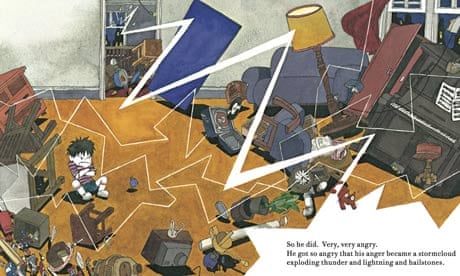What picture books, with high quality text, could engage able learners in years 5 and 6?
Daniel Childs (Teacher from Woodlands Junior School in Tonbridge)
The UK has a bad reputation for promoting visual literacy in young readers, and words with pictures have never been much cherished; Tintin and Asterix, for instance, may be much loved, but they do not command the same respect here as elsewhere in Europe.
Parents certainly don't usually see highly illustrated books as a good enough "challenge" for their developing readers. However, the idea that older readers could and should read and enjoy picture books is a well-established educational tradition. In a 1978 article called "Them's for the Infants, Miss", critic and librarian Elaine Moss wrote about the enormous value of picture books for children throughout primary school and even into secondary school.
Some teachers agreed but, even then, she discovered that children themselves sometimes found it hard to think themselves "good readers" if they were looking at pictures as well as text. John Burningham's Come Away from the Water, Shirley, for instance, is a beguiling double narrative of parents enjoying a prosaic day on the beach while their daughter has a series of fantastic adventures, but children who might have enjoyed it considered it beneath them. Moss subsequently wrote Picture Books for Young People 9-13, a booklet she updated three times, as the number of high quality picture books for this age group grew.

The range of sophisticated picture books, telling stories that really shouldn't be sniffed at, is impressively broad. Anthony Browne's surreal illustrations tell richly imaginative stories in books such as The Tunnel or Into the Forest. Emotional turmoil is captured in Satoshi Kitamura's explosive Angry Arthur as eloquently as it ever could be in words. Politics is especially well represented in picture books, from the green message at the heart of Michael Foreman's Dinosaurs and All that Rubbish, through condemnations of war such as David McKee's deftly understated The Conquerors, to the haunting portrait of immigration in Shaun Tan's awarding-winning The Arrival, one of the best books on the subject for any age group.
More highly illustrated novels than picture books, your year 5 and 6 pupils might well enjoy recent collaborations between David Almond and Polly Dunbar including My Dad's a Birdman and The Boy Who Climbed Into the Moon, and Almond's similar collaborations with Dave McKean in both The Savage and Slog's Dad.

In the same vein, Neil Gaiman's award-winning The Graveyard Book illustrated by Chris Riddell and Coraline, also illustrated by Dave McKean, will convince even the most determinedly print-focused junior that pictures should not just be left to the infants.
